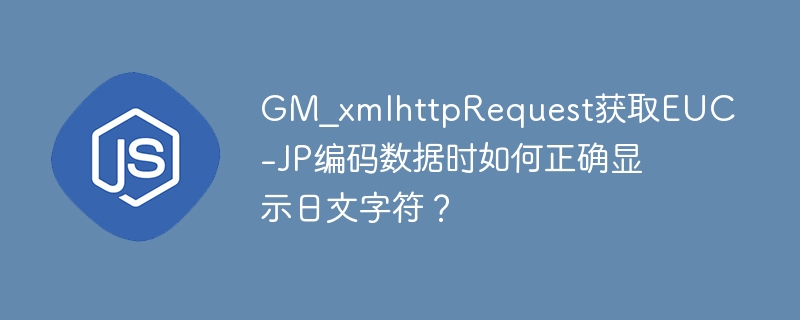GM_xmlhttpRequest获取EUC-JP编码数据时如何正确显示日文字符?

如何处理euc-jp编码的gm_xmlhttprequest响应以显示日文字符?
在使用gm_xmlhttprequest获取编码为euc-jp的网站数据时,直接显示结果或使用encoding.min.js进行解码后,日文字符可能会出现乱码。
要解决此问题,可以使用以下方法:
const ab2str = (arrayBuf, encodeType) => {
var decoder = new TextDecoder(encodeType)
var u8arr = new Uint8Array(arrayBuf)
return decoder.decode(u8arr)
}
GM_xmlhttpRequest({
method: "GET",
url: "https://seesaawiki.jp/av_video/d/%c6%e1%b2%ec%ba%ea%a4%e6%a4%ad%a4%cd",
responseType: "arraybuffer", // 以ArrayBuffer形式获取响应
onload: function (response) {
if (response.status >= 200 && response.status < 300) {
// 将ArrayBuffer转换为EUC-JP字符串
const eucJpString = ab2str(response.response, 'EUC-JP')
// 对EUC-JP字符串进行处理
console.log(eucJpString)
} else {
console.error("Error fetching data:", response.status)
}
},
onerror: function (error) {
console.error("Request error:", error)
},
})使用此方法,可以将arraybuffer以euc-jp编码转换为字符串,从而正确显示日文字符。
以上就是GM_xmlhttpRequest获取EUC-JP编码数据时如何正确显示日文字符?的详细内容,更多请关注硕下网其它相关文章!
